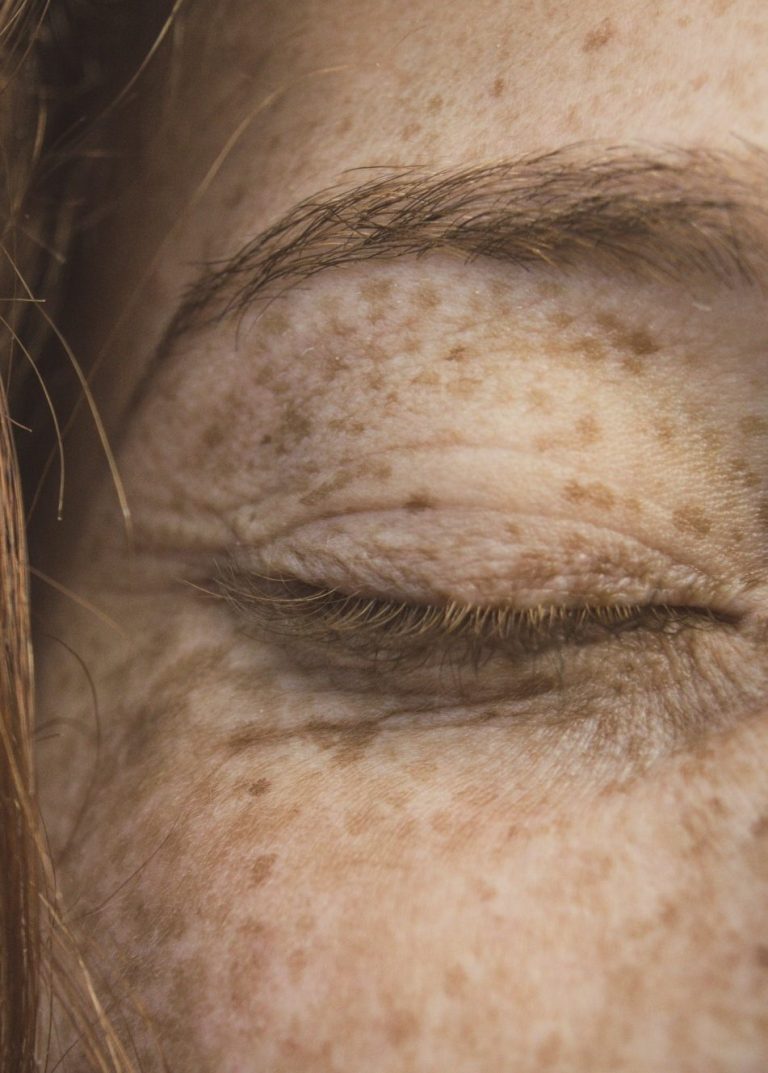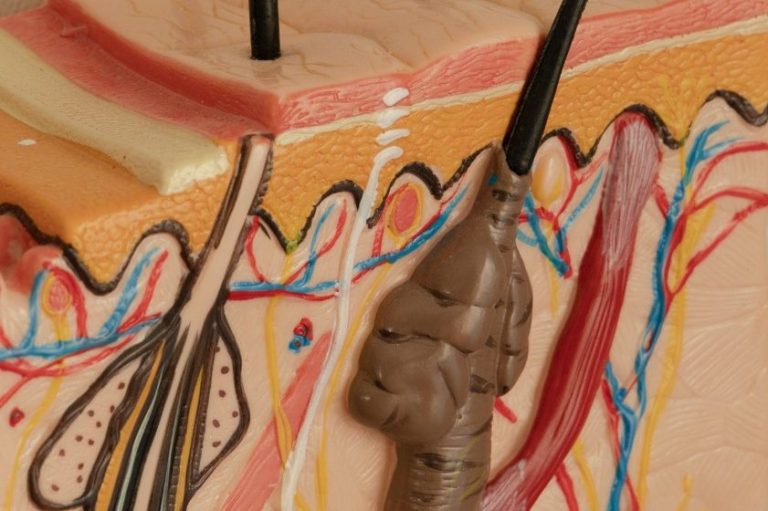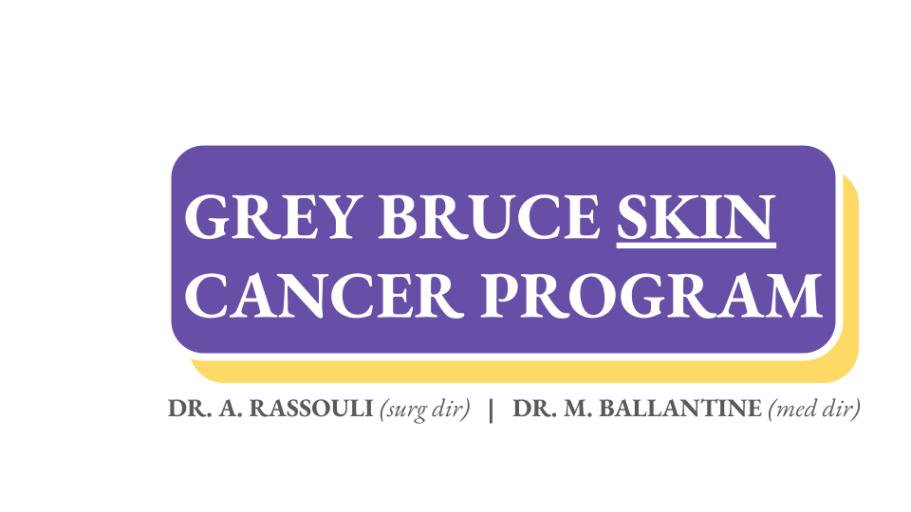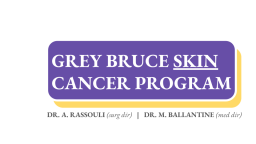GREY BRUCE FIRST
CENTRE OF EXCELLENCE
FOR
SKIN CANCER
Our team
We are a team of BOARD CERTIFIED and highly skilled physicians and surgeons dedicated to skin cancer diagnosis and treatment. We have created the first multidisciplinary and comprehensive skin cancer program in Grey Bruce and will continuously improve the access and quality of care to our community.

Dr. A. Rassouli
Surgical Director
Double Board Certified
- Royal College of Physicians & Surgeons of Canada (Otolaryngology - Head & Neck Surgery)
- American Board of Facial Plastic & Reconstructive Surgery

Dr. M. Ballantine
Medical Director
Board certified in family medicine with additional Diploma in Practical Dermatology and OHIP/OMA recognized focused practice in Skin Disorders
Extensive experience in Dermatologic conditions with special focus on skin cancers.

Dr. W. Mitchell
Primary Care Dermatology
Double Board Certified
- Family Medicine with Diploma in Primary Skin Cancer Management with over 15 years experience in skin cancer care
- Aesthetic Medicine

Dr. R. Dworkin
Primary Care Dermatology
Board certified in family medicine with additional Diploma in Practical Dermatology and OHIP/OMA recognized focused practice in Skin Disorders
30-year experience in Dermatologic conditions.

Dr. A. Lozon
Oncologic Surgeon
Double Board Certified
- Royal College of Physicians & Surgeons of Canada (General Surgery)
- American Board of Surgery

Dr. J. Caulfeild
Oncologic Surgeon
Board Certified by Royal College of Physicians & Surgeons of Canada (General Surgery)

We Know Skin Cancer
The first and the only multi-disciplinary skin cancer program in Grey Bruce
Welcome to the leading destination for skin cancer diagnosis and treatment in Grey Bruce! What sets us apart is our commitment to excellence in every aspect of care. As the sole skin cancer program in the region, our dedicated team consists exclusively of board-certified physicians with extensive expertise in dermatology and oncology. What truly distinguishes us is our collaborative approach — we operate within a multidisciplinary team, ensuring that every patient benefits from a comprehensive and personalized care plan. We understand the urgency of your concerns, and that's why we prioritize efficiency, working tirelessly to keep wait times to a minimum. Above all, we champion patient-centered care, tailoring our services to meet individual needs and fostering a supportive environment where your health and well-being take precedence. Choose us for unparalleled expertise, a compassionate touch, and a commitment to your skin health journey.
What we do
We diagnose and treat all forms of skin cancers

Basal Cell Carcinoma
Basal cell carcinoma (BCC) is the most prevalent form of skin cancer, but here's the good news: it's highly treatable, especially when detected early. Typically caused by prolonged exposure to ultraviolet (UV) rays from the sun or tanning beds, BCC commonly appears on sun-exposed areas like the face, neck, and hands. There are different types of BCC, including nodular, superficial, and morpheaform, each with distinct characteristics. Although it tends to grow slowly, early detection is crucial. BCC often presents as a pearly or waxy bump, a flat, flesh-colored or brown scar-like lesion, or a bleeding or oozing sore that doesn't heal. Diagnosing BCC usually involves a skin biopsy, a simple procedure where a small sample is taken for examination. Treatment options vary, but they commonly include surgical removal, cryotherapy (freezing), and topical medications. Regular skin checks, sun protection, and prompt consultation with a dermatologist can play a key role in preventing and managing basal cell carcinoma effectively. Remember, your skin health matters, so be proactive in protecting it!

Squamous Cell Carcinoma
Squamous cell carcinoma (SCC) is another common type of skin cancer, but the good news is that it's often treatable when caught early. It typically arises from prolonged exposure to UV rays from the sun or tanning beds, and it's the second most common form of skin cancer. SCC can take different forms, including flat, scaly lesions or firm, red nodules, and it frequently appears on sun-exposed areas like the face, ears, and hands. While it tends to grow more quickly than basal cell carcinoma, early detection is crucial for successful treatment. Diagnosis usually involves a simple skin biopsy, where a small sample is taken for examination. Treatment options for SCC may include surgical removal, radiation therapy, or topical medications, depending on the size and location of the lesion. As with any skin cancer, prevention is key — protecting your skin from the sun and promptly addressing any changes or new growths can significantly reduce the risk of squamous cell carcinoma. Regular skin checks with a dermatologist are important for maintaining healthy skin and catching potential issues early on.

Melanoma
Melanoma, though less common than other skin cancers, is the most serious and potentially life-threatening. It originates in the pigment-producing cells (melanocytes) and is often associated with exposure to UV radiation, including sunlight and tanning beds. Melanoma can occur anywhere on the body and can manifest in various forms, such as moles that change in size, shape, or color, or new and unusual growths. Unlike other skin cancers, melanoma can grow rapidly and may spread to other parts of the body if not detected early. Diagnosis typically involves a skin biopsy to examine suspicious moles or lesions. Early detection is crucial, and individuals are encouraged to monitor their skin for any changes and promptly consult a dermatologist if concerns arise. Treatment options may include surgical removal, immunotherapy, targeted therapy, or chemotherapy, depending on the stage of the melanoma. Sun protection and regular skin checks are essential for preventing melanoma and ensuring the best possible outcomes.

Actinic Keratosis
Actinic keratosis (AK) is a common skin condition often caused by prolonged sun exposure. It's prevalent, especially in fair-skinned individuals, and usually appears as rough, scaly patches on areas frequently exposed to the sun, such as the face, ears, and hands. Although not cancerous, untreated AKs may develop into skin cancer over time. AKs can take different forms, ranging from flat, red spots to thicker, wart-like lesions. They often grow slowly, but their progression varies from person to person. Diagnosis involves a dermatologist examining the affected area, and sometimes a biopsy may be performed to rule out skin cancer. It's important to note that our program specializes in treating extensive actinic keratosis. Treatment options for more severe cases may include cryotherapy (freezing), topical medications, laser therapy, or photodynamic therapy. Regular skin checks and sun protection are crucial in managing and preventing actinic keratosis, and our program is dedicated to providing comprehensive care for those with more advanced cases.

Mole Mapping
Mole mapping is a highly effective method for monitoring and assessing changes in skin moles over time. It involves the systematic imaging of the entire skin surface, capturing detailed pictures of individual moles and their surrounding areas. This proactive approach is crucial for early detection of any potential signs of skin cancer, particularly melanoma. Mole mapping has become increasingly important as it allows for a comprehensive record of the skin's condition, aiding dermatologists in identifying subtle changes that may be indicative of malignancy. Recent advancements in technology have introduced automated machines that utilize 360-degree imaging, providing a thorough analysis of each mole. These machines not only capture high-resolution images but also enable a side-by-side comparison with previous scans. This comparison is instrumental in recognizing any alterations or developments, prompting timely intervention when necessary. Mole mapping, especially with the aid of automated systems, enhances precision, efficiency, and the overall effectiveness of skin cancer surveillance, empowering individuals to take a proactive stance in their skin health.
Contact us for more information
Tel: (226) 396 1030

Scar Treatment
Scars are a natural part of the skin's healing process, resulting from injuries or surgeries. While they signify the body's remarkable ability to repair itself, many individuals seek ways to improve their appearance. Various treatments are available to address different types of scars. Topical creams containing ingredients like silicone, vitamin E, or onion extract can be beneficial in minimizing scars by keeping the skin hydrated and promoting healing. Intense Pulsed Light (IPL) laser therapy targets discoloration and can enhance the overall tone of the scar. CO2 laser treatments are effective for reducing the size and texture of scars, particularly those caused by acne or surgery. Microneedling involves tiny needles creating controlled micro-injuries to stimulate collagen production and improve the texture of scars. Each of these treatments caters to specific scar characteristics, and consulting with a dermatologist can help determine the most suitable option based on individual needs and the type of scarring.
Contact us for more information
Tel: (519) 270-0883
referral
form

Give this referral form to your doctor to be referred for assessment
We do require a referral from your primary care physician or nurse practitioner for assessment. If they do not have our referral form, you can download the form and provided to them. Referring MDs/NPs can download the from here as well.
We need your consent to load the translations
We use a third-party service to translate the website content that may collect data about your activity. Please review the details and accept the service to view the translations.

